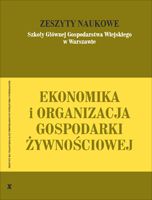Main Article Content
Article Details
ANDERSSON P. H., HILTUNEN K. and VILLANEN H. (2004). Promoting quality in Finnish companies. Ministry of Trade and Industry. Edita Publishing.
BECKER B. AND HUSELID M. (1998). 'High Performance Work Systems and Firm Performance: A Synthesis of Research and Managerial Implications', Research in Personnel & Human Resources Management, vol. 16, 53-101.
BECKER B. and HUSELID M. (2006). 'Strategic Human Resources Management: Where Do We Go From Here?', Journal of Management, Vol.32, 898-925. (Crossref)
BECKER B., HUSELID M. and ULRICH D. (2001). The HR Scorecard: Linking People, Strategy and Performance, Cambridge, MA: Harvard Business School Press.
BELL V., BURRIEL-LLOMBART P. and JONES J. (2005). 'A quality-adjusted labour input series for the United Kingdom (1975- 2002)', Bank of England Working Paper No. 280, Bank of England: London. (Crossref)
BOUDREAU J. and RAMSTAD P. (1999). 'Human Resource Metrics: Can Measures be Strategic?', Research in Personnel and Human Resources Management, Supplement 4,75-98.
BS 6143-2 (1990). Guide to the Economics of Quality Part 2: Prevention, Appraisal and Failure Model. London: British Standards Institution.
CAMERON K.S. and QUINN R.E. (2006). Diagnosing and Changing Organizational Culture.The Jossey-Bass Business & Management Series. John Wiley and Sons.
CAMUS D. (Edited) (2007). The ONS Productivity Handbook: A Statistical Overview and Guide, Office for National Statistics. Palgrave MacMillan.
CASCIO W. and BOUDREAU J. (2008). Investing In People. Pearson Education Inc. USA.
CORRADO C., HULTEN C. and SICHEL D. (2005). Measuring capital and technology: An expanded framework. Corrado, Carol, Haltiwanger, John and Sichel, Daniel. Measuring Capital in the New Economy. NBER, Studies in income and wealth, vol. 65. The University of Chicago Press: Chicago. (Crossref)
DAVERI F. and MALIRANTA M. (2007). Age, seniority and labour costs: lessons from Finnish IT revolution. Economic Policy, 22(49), 117-175. (Crossref)
Elinkeinoelämän keskusliitto (2008). Työaikakatsaus; Työajat ja poissaolot EK:n jäsenyrityksissä vuonna 2007, Helsinki.
FITZ-ENZ J. (2000). The ROI of Human Capital: measuring the economic value of employee performance, Amacom. United States of America.
FLEETWOOD S. and HESKETH A. (2010). Explaining the Performance of Human Resource Management, Cambridge University Press. (Crossref)
GUEST D. (1997). 'Human Resource Management and Performance: A Review and Research Agenda', International Journal of Human Resource Management, Vol. 8, No. 3, 263-76. (Crossref)
GUEST D. (2001). 'Human Resource Management: When Research Confronts Theory', International Journal of Human Resource Management, Vol. 12, No. 7, 1092-106. (Crossref)
HARISALO R. and E. MIETTINEN (2010). Luottamus, Tampere University Press.
HUSELID M. (1995). 'The Impact of Human Resource Management Practices on Turnover, Productivity, and Corporate Financial Performance', Academy of Management Journal, Vol. 38, No. 3, 635-72. (Crossref)
ICHNIOWSKY C., SHAW K. and PRENNUSHI G. (1997). 'The Effects of Human Resource Management on Productivity: A Study of Steel Finishing Lines', The American Economic Review, Vol. 87, No. 3, 291-313.
JORGENSON D., GOLLOP F. and FRAUMENI B. (1987), Productivity and U.S. Economic Growth, Harvard University Press, Ma.
KAPLAN R.S. and NORTON D.P. (1996). The Balanced Scorecard: Translating Strategy Into Action, Boston: Harvard Business School Press.
KAPLAN R.S. and NORTON D.P. (2004).Strategy Maps: Converting Intangible Assets Into Tangible Outcomes, Boston: Harvard Business School Press.
KESTI M., SYVÄJÄRVI A. and STENVALL J. (2009). Hiljaiset signaalit HRIS: yksi ratkaisu organisaation inhimillisen pääoman ja henkilöstötuottavuuden kehittämisessä. Hallinnon tutkimus 1, 2009.
KESTI M. and SYVÄJÄRVI A. (2010). Human tacit signals at organization performance development, Industrial Management & Data Systems Vol. 110 No. 2, 2010 pp. 211-229, Emerald Group Publishing Limited. (Crossref)
KESTI M. (2009). Strategic Human Capital Management, Talentum, Helsinki (in Finnish).
KESTI M. (2007). High performance organization, Edita Publishing, Helsinki. (in Finnish).
KESTI M., SYVÄJÄRVI A. and STENVALL J. (2008). E-HRM in Competence Recognition and Management - The Tacit Signal HRIS. In Torres-Coronas, T. and Arias-Oliva, M. (eds.) Encyclopedia of Human Resource Information Systems: Challenges in E-HRM. Idea Group Publishing Inc, USA. (Crossref)
KETS de VRIES, M. (2006). The Leadership Mystique. Leading Behavior in the Human Enterprise. Second edition. Prentice Hall.
LIUKKONEN P. (2008). Henkilöstön arvon mittaaminen. Talentum, Helsinki.
LUMIJÄRVI, I. (2009). Johtamisen vaikutus organisaation tuloksellisuuteen, Juvenes Print - Tampereen yliopistopaino Oy, Tampere.
LÖNNQVIST A. (2007). Intellectual capital and productivity: Identification and measurement of the relationship and company-level. ETLA; The Research Institute of the Finnish Economy.
MALIRANTA M. and ASPLUND R. (2007). Training and hiring strategies to improve firm performance, ETLA, Discussion Paper no. 1105, Helsinki.
OECD (2001). 'Measuring Productivity, Measurement of Aggregate and Industry-Level Productivity Growth', Organisation for Economic Co-operation and Development: Paris.
PAAUWE J. (2004). Human Resource Management and Organizational Performance, Oxford: Oxford University Press.
PFEFFER J. (1994). Competitive Advantage through People: Unleashing the Power of the Workforce, Boston: Harvard University Press.
RAMSAY H., SCHOLARIOS D. and HARLEY B. (2000). 'Employees and High-Performance Work Systems: Testing Inside the Black Box', British Journal of Industrial Relations, Vol. 38, No. 4, 501-31. (Crossref)
RANTALA O. (2008). T&K pääoma, teknologian diffuusio ja talouskasvu. Julkaisussa Huovari J. (toim.), Aineeton pääoma ja talouskasvu TEKES 230/2008.
SAARI S. (2006). "Productivity. Theory and Measurement in Business" (PDF). European Productivity Conference, 30 August-1 September 2006, Espoo, Finland. http://www.mido.fi/index_tiedostot/Productivity_EPC2006_Saari.pdf.
SILA I. (2006). 'Examining the Effects of Contextual Factors on TQM and Performance through the Lens of Organizational Theories: An Empirical Study', Journal of Operations Management, Vol. 25, No. 1, 83-109. (Crossref)
SYVÄJÄRVI A. (2005). Inhimillinen pääoma ja informaatioteknologia. University of Lapland. Rovaniemi.
TELMA (2010). Tacit knowledge into effective use, TELMA Magazine article, The Finnish Work Environment Fund, http://www.telma-lehti.fi/?42_m=443&s=14
TOTTERDILL P., DHONDT S. and MILSOME S. (2002). Partners at Work? A Report to Europe's Policy Makers and Social Partners, D G Research of the European Commission under the Competitive and Sustainable Growth: Accompanying Measures Programme.
ULRICH D. (1997). Human Resource Champions, the Next Agenda for Adding Value and Delivering Results, Boston: Harvard Business School Press.





